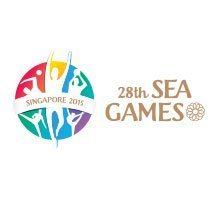Abbreviation SEA Games | ||
 | ||
Occur every 2 years ( Every odd years ) Last event 2015 SEA Games in Singapore Purpose Multi sport event for nations on the Southeast Asian continent Instances 2023 Southeast Asian Ga, 2019 Southeast Asian Ga, 2017 Southeast Asian Ga, 2015 Southeast Asian Ga, 2013 Southeast Asian Ga | ||
The Southeast Asian Games (also known as the SEA Games), is a biennial multi-sport event involving participants from the current 11 countries of Southeast Asia. The games is under regulation of the Southeast Asian Games Federation with supervision by the International Olympic Committee (IOC) and the Olympic Council of Asia.
Contents
History
The Southeast Asian Games owes its origins to the South East Asian Peninsula Games or SEAP Games. On 22 May 1958, delegates from the countries in Southeast Asian Peninsula attending the Asian Games in Tokyo, Japan had a meeting and agreed to establish a sport organisation. The SEAP Games was conceptualised by Luang Sukhum Nayaoradit, then Vice-President of the Thailand Olympic Committee. The proposed rationale was that a regional sports event will help promote co-operation, understanding and relations among countries in the Southeast Asian region.
Six countries, Burma (now Myanmar), Kampuchea (now Cambodia), Laos, Malaya (now Malaysia), Thailand and Vietnam were the founding members. These countries agreed to hold the Games biennially in June 1959 and SEAP Games Federation Committee was formed thereafter.
The first SEAP Games were held in Bangkok from 12–17 December 1959 comprising more than 527 athletes and officials from Thailand, Burma, Malaya (now Malaysia), Singapore, South Vietnam and Laos participating in 12 sports.
At the 8th SEAP Games in 1975, the SEAP Federation considered the inclusion of Brunei, Indonesia and the Philippines. These countries were formally admitted in 1977, the same year when SEAP Federation changed their name to Southeast Asian Games Federation (SEAGF), and the games were known as the Southeast Asian Games. East Timor was admitted at the 22nd Southeast Asian Games in Vietnam.
The 2009 Southeast Asian Games was the first time Laos has ever hosted a Southeast Asian Games (Laos had previously declined hosting the 1965 Southeast Asian Peninsular Games citing financial difficulties). Running from 9–18 December, it has also commemorated the 50 years of the Southeast Asian Games, held in Vientiane, Laos.
Host nations and cities
Since the Southeast Asian Games began in 1959, it has been held in 15 different cities across all Southeast Asian countries except Cambodia and Timor Leste.
Sports
A host nation must stage at least a minimum of 22 sports. For each sport and event, a minimum of four member-country must participate to be included in the SEA Games. Sports competed shall not offer more than 5% of total medal tally, with the exception to athletics, aquatics, and shooting. Two compulsory sports (Category 1); athletics and aquatics must be stage in every SEA Games edition, in addition to a minimum of 14 sports from Category 2 and a maximum of 8 sports from Category 3. According to SEAGF Charter and Rules, sports competed in Olympic Games and Asian Games must be given priority or preference.
All-time medal table
With reference to the official data of the Olympic Council of Asia.
Criticism
The games is unique in that there are no official limits to the number of sports which may be contested, and the range may be decided by the organising host pending approval by the Southeast Asian Games Federation. Albeit for some core sports which must be featured, the host is also free to drop or introduce other sports. The strategy to maximise the medal yield and advantage for host country has been a major problem for Southeast Asian Games that being carried out by the host country.
This leeway has resulted in hosts maximising their medal hauls by dropping sports which are disadvantages to themselves relative to their peers, and the introduction of obscure sports, often at short notice, thus preventing most other nations from building up credible opponents. Some examples of these include:
